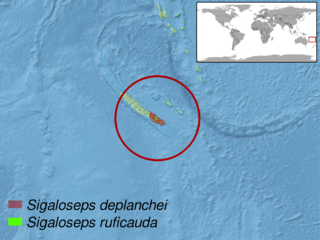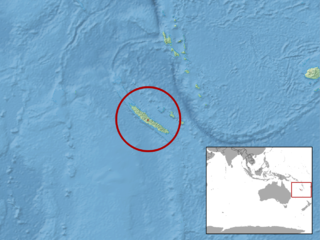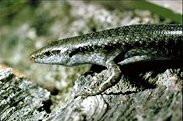
Caledoniscincus is a genus of lizards in the family Scincidae (skinks). The genus is endemic to New Caledonia.

Graciliscincus is a lizard genus in the family Scincidae. The genus is indigenous to New Caledonia.
Nannoscincus is a genus of small skinks, lizards in the family Scincidae. The genus is endemic to New Caledonia.

Sigaloseps is a genus of skinks which inhabit the moist, closed forest of southern New Caledonia.

Geoscincus is a monotypic genus of skinks: the only accepted species is Geoscincus haraldmeieri.

Joseph Richard Slevin was an American herpetologist and the second curator of herpetology at the California Academy of Sciences, with which he was affiliated for over 50 years. He collected reptile and amphibian specimens from around the world, notably in the Galápagos Islands in a 17-month expedition, and was largely responsible for re-growing the academy's herpetological collection following its destruction in the 1906 San Francisco earthquake. He wrote or co-wrote nearly 60 scientific papers, and is commemorated in the scientific names of over a dozen species or subspecies of animals and plants.

Caledoniscincus chazeaui, also known commonly as Chazeau's litter skink, is a species of lizard in the family Scincidae. The species is endemic to New Caledonia.

Emoia slevini, also known commonly as the Mariana skink, Slevin's brown skink, Slevin's emo skink, and Slevin's skink, is a species of lizard in the family Scincidae. The species is endemic to the Mariana Islands.

Lioscincus steindachneri, also known commonly as the white-lipped forest skink or Steindachner's ground skink, is a species of lizard in the family Scincidae. The species is endemic to New Caledonia.
Nannoscincus exos, the northern dwarf skink, is a species of skink found in New Caledonia.

Nannoscincus garrulus is a species of skink found in New Caledonia.
Nannoscincus gracilis, the New Caledonian gracile dwarf skink, gracile dwarf skink, or slender elf skink, is a species of skink found in New Caledonia.
Nannoscincus greeri, Greer's elf skink, is a species of skink found in New Caledonia.
Nannoscincus hanchisteus, the Pindai dwarf skink, is a species of skink found in New Caledonia.
Nannoscincus humectus, the Forêt Plate dwarf skink, is a species of skink found in Province Nord, New Caledonia. Its geographical distribution is very limited as it occurs in only two locations in Province Nord, totalling an area of occupancy of 12 km2 (4.6 sq mi). This distribution and the skink's population have been decreasing, for these reasons it is classified by the IUCN as Endangered.
The earless dwarf skink is a species of skink found in New Caledonia.
Phasmasaurus tillieri, commonly known as Tillier's maquis skink, is a species of lizard in the family Scincidae. It is endemic to New Caledonia.

Phoboscincus garnieri, also known commonly as Garnier's giant skink and Garnier's skink, is a species of lizard in the family Scincidae. The species is endemic to New Caledonia.

Saproscincus challengeri, also known commonly as the Border Ranges shadeskink, Challenger's skink, the challenging shade skink, and the orange-tailed shadeskink, is a species of lizard in the family Scincidae. The species is native to New South Wales and Queensland in Australia.

Sigaloseps deplanchei, Deplanche's shiny skink, is a species of lizard in the family Scincidae. The species is endemic to New Caledonia.












